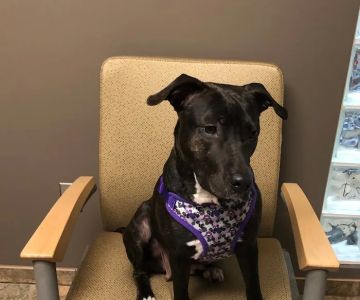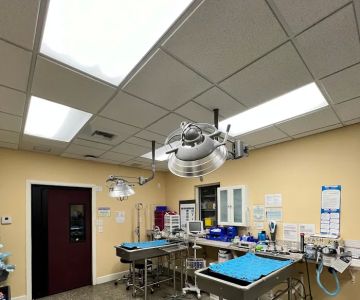Mastering Pet Medical Emergencies: A Pro’s Guide to Handling Pet Health Crises
As a pet owner, one of the most terrifying scenarios is dealing with a medical emergency involving your furry friend. Whether it’s a sudden injury, an allergic reaction, or a health crisis that arises without warning, knowing what to do can make all the difference in your pet's well-being. I’ve experienced a few of these emergencies myself and have learned valuable lessons along the way that I want to share with you. This guide will walk you through how to handle pet medical emergencies like a pro, with practical steps, tips, and real-life stories that can help you stay calm and act quickly when every second counts.
1. Stay Calm and Assess the Situation
When faced with a pet emergency, it’s easy to panic, but staying calm is crucial for both you and your pet. Panicking can make it harder for you to think clearly, and your pet will sense your anxiety, which could increase their stress. I remember the time my dog, Max, suddenly collapsed after eating something he shouldn’t have. At first, I was terrified, but I took a deep breath and tried to focus on what was happening in front of me. Was he breathing? Did he seem to be in pain? Assessing the situation calmly helped me determine whether it was a life-threatening emergency or something less severe.
In most situations, the first thing you should do is assess the severity of the emergency. Check if your pet is breathing, conscious, and if they seem to be in pain. If your pet is unconscious or having difficulty breathing, it’s time to act quickly and get them to a vet immediately. If the emergency involves bleeding, try to control the bleeding by applying gentle pressure with a clean cloth. It’s important to always check for signs of shock, which include rapid breathing, weak pulse, and pale gums. These can be indicators that immediate veterinary care is necessary.

7790 S U.S. Hwy 1, Port St. Lucie, FL 34952, USA
See Details2. Handle Common Pet Medical Emergencies
While every pet emergency is unique, there are certain common emergencies that many pet owners may encounter. It’s essential to know how to handle these situations to ensure your pet receives the care they need as soon as possible.
Choking or Difficulty Breathing
Choking is one of the most distressing emergencies you can encounter with your pet. I recall an instance when my cat, Oliver, swallowed a small toy, and I noticed he was gasping for air. Panicking in that moment wouldn’t have helped, so I stayed calm and gently opened his mouth to check if I could remove the obstruction. If your pet is choking and can’t dislodge the object, performing the Heimlich maneuver for pets may save their life. For dogs, this involves applying pressure to the abdomen, while for cats, gently tapping on their back can sometimes help loosen the object. If these methods don’t work, it’s vital to get your pet to a vet immediately.
Severe Bleeding
Another common emergency is severe bleeding. If your pet has a deep cut or wound, it’s important to stop the bleeding as soon as possible. I’ve had to handle this with my dog, Luna, after she accidentally cut herself on a sharp object while playing. The best way to manage this situation is to apply direct pressure on the wound with a clean cloth or bandage. Keep pressure on the wound for several minutes, and if the bleeding doesn’t stop, elevate the injured limb (if possible) and seek veterinary help immediately.
Poisoning or Toxicity
Pets are naturally curious, which sometimes leads them to eat things that are harmful to them. From chocolate to plants, certain foods and substances are toxic to pets. If your pet has ingested something they shouldn’t have, it’s important to act fast. My friend once had a scare when her dog ate a portion of a chocolate bar she left on the table. She immediately called poison control for pets and rushed him to the vet. If you suspect your pet has ingested something toxic, contact your vet or a pet poison helpline as quickly as possible. Be sure to have the packaging or a description of what they ingested, as this can help the vet provide the right treatment.
3. Basic Pet First Aid Tips Every Owner Should Know
Knowing basic pet first aid can make you feel more prepared to handle an emergency. While it’s essential to seek veterinary care for serious injuries or illnesses, these first aid tips can help stabilize your pet until you can get them to a professional.
CPR for Pets
Cardiopulmonary resuscitation (CPR) can be a lifesaver if your pet stops breathing or their heart stops beating. I’ve taken a pet first aid course, and learning how to perform CPR on pets has been incredibly reassuring. To perform CPR on a dog, you should place your hands over their ribcage and apply chest compressions. For cats, chest compressions are performed with one hand. Both situations require you to do compressions at a specific rate, usually around 100 compressions per minute. Always follow up with a veterinarian immediately after performing CPR, as these actions can only temporarily sustain your pet.
Splinting Injuries
Fractures are another common pet emergency, and immobilizing the limb can prevent further injury. I once had to splint my dog’s leg after she fell from a height. I used a sturdy object like a pencil or stick and wrapped it with bandages around the injured limb. While this doesn’t replace the need for veterinary care, it helped stabilize the leg and prevent unnecessary pain during transportation. Be sure to never use a splint on an open wound—always focus on stopping bleeding first and get to the vet quickly.
4. Create a Pet Emergency Kit
Having a well-stocked pet emergency kit can help you handle a variety of medical crises without having to search for supplies when time is of the essence. I’ve created my own pet emergency kit that includes basic first aid supplies like bandages, gauze, antiseptic wipes, tweezers, and a thermometer. I also keep important contact information, such as my vet’s phone number and the nearest animal emergency clinic, in the kit. Having everything in one place means I’m prepared for anything, whether it’s a minor scrape or a major medical emergency.
5. Know When to Seek Professional Help
While knowing how to handle basic pet medical emergencies is crucial, it’s equally important to know when to seek professional help. If your pet is showing signs of shock, severe bleeding, or loss of consciousness, don’t wait—contact your vet immediately. I’ve learned the hard way that sometimes emergencies require a skilled professional to ensure your pet’s survival. Even if the situation doesn’t seem life-threatening, a vet can provide the necessary treatment and prevent long-term issues.
In moments of panic, remember that your pet relies on you to make the right decisions. Whether it’s a minor injury or a serious health crisis, staying calm, acting quickly, and knowing what steps to take can make all the difference in your pet’s recovery. And most importantly, always be sure to reach out to your vet for guidance—they’re there to help when you need it most.










